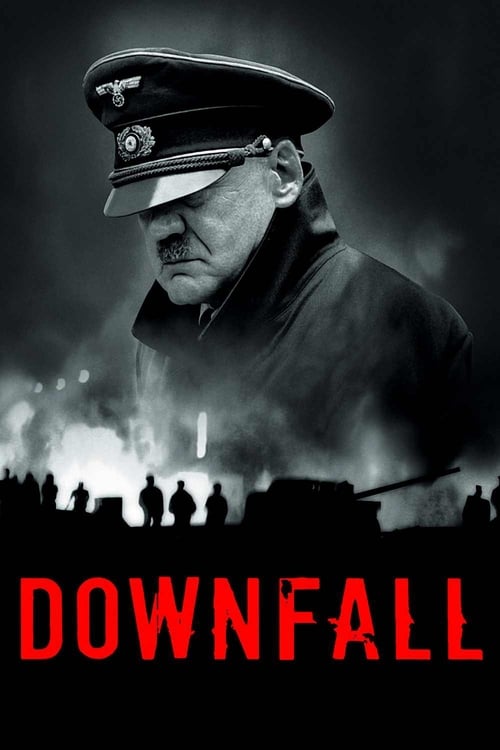Introduction:
Released in 2004, “Downfall” (German title: “Der Untergang”) stands as a cinematic masterpiece that delves into the final days of Adolf Hitler’s regime during World War II. Directed by Oliver Hirschbiegel, the film offers a harrowing portrayal of historical events and human nature in the face of catastrophic downfall. This comprehensive review aims to explore the various facets of “Downfall,” analyzing its narrative depth, performances, visual aesthetics, historical accuracy, and the impact it has had on the war documentary genre.
I. Plot and Narrative Depth:
- Historical Context: “Downfall” is based on historical accounts and the memoirs of Traudl Junge, Hitler’s secretary. The film primarily unfolds in the Führerbunker in Berlin during the closing days of World War II, portraying the collapse of the Nazi regime.
- Character Dynamics: The film offers a multi-dimensional view of various historical figures, including Hitler, Eva Braun, Joseph Goebbels, and other key figures. The character dynamics are meticulously crafted, revealing their personal struggles, fanaticism, and the internal conflicts that arise as the situation becomes increasingly dire.
- Exploration of Morality: “Downfall” delves into the moral complexities of individuals facing imminent defeat. It raises questions about the responsibility of those who served under Hitler and explores the human capacity for empathy and morality even in the darkest hours.
II. Performances:
- Bruno Ganz as Adolf Hitler: Bruno Ganz’s portrayal of Adolf Hitler is widely acclaimed and considered one of the most compelling performances in cinematic history. Ganz captures the complexity of Hitler’s character, showcasing his charisma, paranoia, and descent into madness with unparalleled nuance.
- Supporting Cast: The supporting cast, including Alexandra Maria Lara as Traudl Junge and Corinna Harfouch as Magda Goebbels, delivers stellar performances. The ensemble cast skillfully brings historical figures to life, adding authenticity and emotional depth to the narrative.
III. Visual Aesthetics:
- Bunker Realism: The film’s production design and cinematography create a stark and realistic portrayal of the claustrophobic Führerbunker. The attention to detail in recreating historical settings contributes to the film’s immersive experience.
- Cinematography: Director of Photography Rainer Klausmann employs a gritty and somber visual style that complements the film’s tone. The use of handheld cameras adds a documentary-like feel, enhancing the sense of immediacy and chaos within the bunker.
IV. Historical Accuracy:
- Faithful Adaptation: “Downfall” is praised for its commitment to historical accuracy. The filmmakers conducted extensive research, consulting documents, firsthand accounts, and historical experts to ensure an authentic representation of the events surrounding Hitler’s last days.
- Controversies: The film, however, sparked controversies for its portrayal of Hitler as a human being rather than a purely evil figure. Some critics argued that humanizing Hitler could potentially diminish the gravity of his crimes, while others applauded the nuanced approach.
V. Impact on the War Documentary Genre:
- Critical Acclaim: “Downfall” received widespread critical acclaim, earning nominations for the Academy Award for Best Foreign Language Film and leading to a surge in interest in war documentaries. It set a new standard for historical accuracy and storytelling within the genre.
- Cinematic Legacy: The film’s impact extends beyond its initial release, influencing subsequent war documentaries and historical dramas. Its approach to depicting historical figures with complexity has become a benchmark for filmmakers tackling sensitive and significant events.
VI. Ethical and Moral Questions:
- Exploring Human Choices: “Downfall” prompts viewers to reflect on the choices made by individuals in times of moral crisis. The film challenges the audience to consider the ethical dimensions of allegiance, obedience, and personal responsibility.
- Historical Accountability: By humanizing historical figures, “Downfall” raises questions about the accountability of individuals who participated in or served under authoritarian regimes. It encourages discussions on the lessons of history and the responsibilities of those who bear witness to such events.
Conclusion:
“Downfall” stands as a cinematic achievement that transcends traditional war documentaries, offering a profound exploration of human nature amidst the chaos of war. Through its meticulous storytelling, exceptional performances, and commitment to historical accuracy, the film immerses audiences in the complex and tumultuous world of Hitler’s final days. “Downfall” not only leaves an indelible mark on the war documentary genre but also serves as a poignant reminder of the ethical challenges faced by individuals in the face of historical cataclysms.
